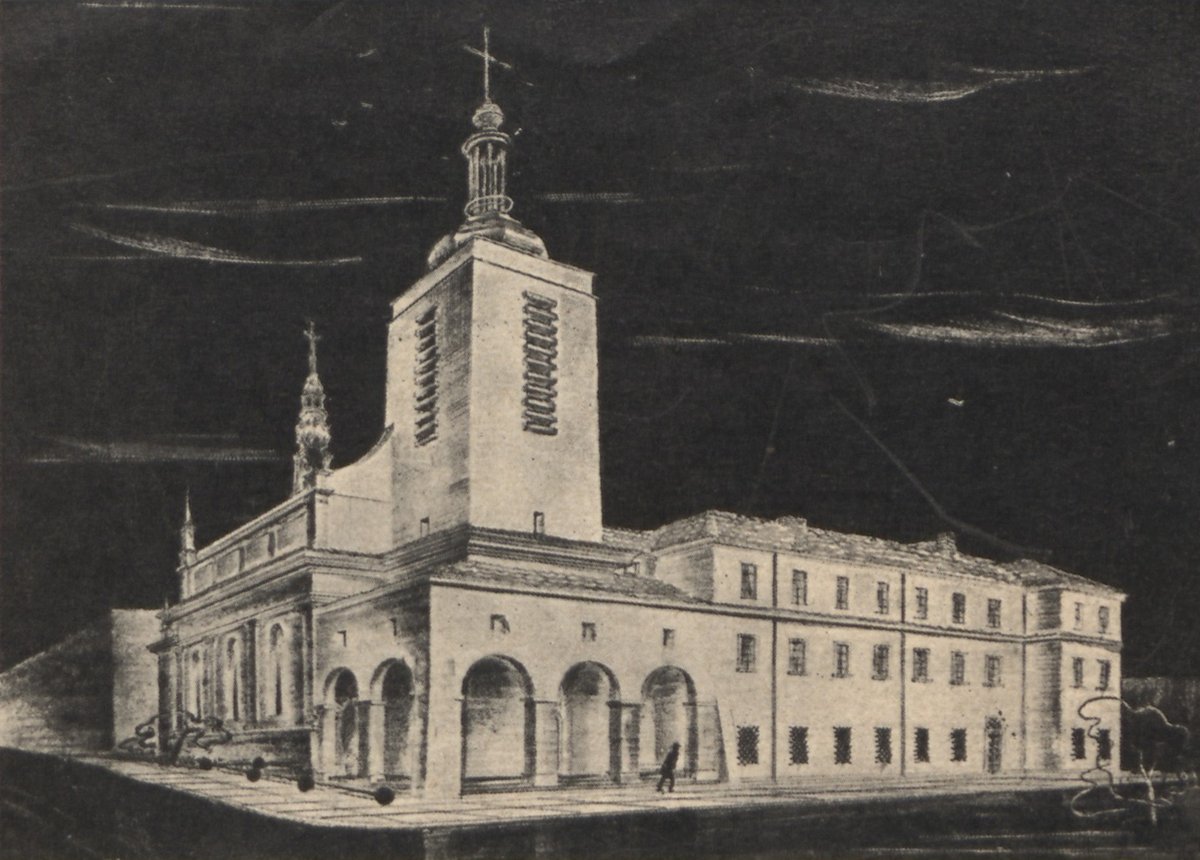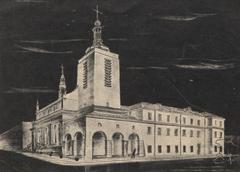
Bernardine Church Lviv, Ukraine: Visiting Hours, Tickets, and Historical Significance
Date: 15/06/2025
Introduction
The Bernardine Church and Monastery in Lviv, officially known as the Church of St. Andrew, stands as one of the most remarkable landmarks in the city’s historic landscape. Situated just outside Lviv’s medieval city walls, this architectural masterpiece encapsulates centuries of religious, cultural, and artistic development. Founded in 1460 by the Bernardine monks—a branch of the Franciscan order—the church and its adjoining monastery exemplify a harmonious blend of Renaissance, Mannerist, and Baroque styles, reflecting Lviv’s role as a crossroads between Eastern and Western Europe.
Today, the Bernardine Church serves both as an active place of worship and a vibrant cultural venue. Its richly decorated interiors, storied past, and strategic location near Lviv’s Market Square make it an essential destination for travelers keen to immerse themselves in the city’s layered history and artistic legacy (Lviv Travel Portal, Iwandered, Discover Ukraine).
Table of Contents
- Introduction
- Historical Overview
- Architectural Style and Features
- Practical Visitor Information
- Visitor Experience
- Legends and Local Lore
- FAQs
- Conclusion
- References
Historical Overview
Origins and Foundation
The Bernardine monks arrived in Lviv in the mid-15th century, establishing their first wooden monastery outside the city’s defensive walls in 1460. Despite suffering destruction from fires and Tatar raids—most notably in 1509—the community persevered, rebuilding their complex in stone during the late 16th and early 17th centuries. The church’s dual role as both a spiritual center and a defensive outpost underscored its importance to the city’s religious and civic life.
Architectural Evolution
Construction of the current stone basilica began in 1600 and was completed by 1630, embodying elements of Italian Renaissance, Mannerism, and Baroque styles. Renowned architects such as Peter the Roman and Ambrose Prihylny contributed to its distinctive three-tiered façade, while the addition of fortifications—including walls, a moat, and a bell tower—reflected the turbulent history of the region (trek.zone).
Interior and Artistic Heritage
Inside, the church dazzles with 17th- and 18th-century frescoes, gilded altars, and a wealth of woodcarvings and sculptures. The main altar, crafted from gilded wood, is adorned with statues of saints and angels and features a central painting of St. Andrew. The interior’s artistic highlights include expansive murals, polychrome sculptures, and intricately carved pulpits, many created by local and Italian artists.
Architectural Style and Features
Façade, Towers, and Defensive Elements
The church’s façade is an impressive composition of pilasters, niches, and sculptural decorations, crowned by a triangular pediment and flanked by two imposing towers. Constructed from sandstone and brick, the façade’s warm hues evoke Italian Renaissance influences, while the original defensive structures—such as the fortified walls and bell tower—symbolize the church’s historical dual function as both sanctuary and fortress (Iwandered).
Interior Layout and Artistic Treasures
The nave features grand barrel vaults, ornate stucco work, and vivid frescoes depicting biblical scenes and allegorical figures. Side chapels honor various saints, each with unique altarpieces and sculptures. The church’s renowned acoustics make it a favored venue for concerts and religious festivals, enhancing both its spiritual and cultural significance.
Practical Visitor Information
Visiting Hours
- General Opening: Daily, 9:00 AM – 6:00 PM.
- Religious Holidays: Hours may vary; check the official tourism portal for updates.
Admission and Guided Tours
- Admission: Free (donations welcomed for maintenance and preservation).
- Guided Tours: Available in multiple languages; booking in advance is recommended, especially during peak seasons.
Accessibility and Facilities
- Accessibility: The main church entrance is wheelchair accessible via ramps. Some areas of the monastery and fortifications may have uneven surfaces.
- Facilities: Restrooms are available on-site. Nearby cafes and souvenir shops provide additional convenience.
Getting There and Nearby Attractions
The church is centrally located at Soborna Square, a short walk from Lviv’s Market Square. Public transport and taxis offer easy access, but walking is often preferred due to the pedestrian-friendly area. Nearby sites include the Dominican Cathedral, Lviv Arsenal, and High Castle Park (The Crazy Tourist).
Visitor Experience
First Impressions and Setting
Approaching Bernardine Church, visitors are greeted by its grand Baroque façade and lively surroundings. Its position just outside the city’s ancient walls points to its historical significance as both a place of worship and a component of Lviv’s medieval defenses. The adjacent square, filled with cafes and artisan shops, provides a vibrant atmosphere (bbqboy.net).
Interior Atmosphere
The church’s nave is illuminated by stained glass windows, casting a warm glow on the richly decorated altars and frescoes. The interplay of art, architecture, and music—often enhanced by live organ or choral performances—creates a reverent yet welcoming ambiance.
Monastery, Courtyard, and Special Events
Behind the church, visitors can explore the monastery courtyard, remnants of the old fortifications, and the historic Hlyniany Gate. The complex hosts seasonal cultural events, such as concerts and art exhibitions, particularly in the Bernardengarden and museum spaces.
Photography and Conduct
Photography is generally permitted, though visitors are asked to avoid flash and be respectful during services. Modest dress is encouraged, and silence or quiet conversation is expected inside the sanctuary.
Legends and Local Lore
The Bernardine Church is steeped in legend. One popular tale recounts how a quick-witted monk saved Lviv from a Tatar raid by ringing the church bells early, alerting the city guards to close the gates in time. Such stories reinforce the church’s enduring role as both spiritual guardian and protector of the city.
Frequently Asked Questions (FAQ)
Q: What are the Bernardine Church visiting hours?
A: Daily, 9:00 AM – 6:00 PM; hours may vary on religious holidays.
Q: Is there an entrance fee?
A: Admission is free; donations are appreciated.
Q: Are guided tours available?
A: Yes, in multiple languages. Book in advance or at the church entrance.
Q: Is the church wheelchair accessible?
A: The main entrance is accessible; some historic areas may be challenging.
Q: Can I take photographs inside?
A: Yes, but avoid flash and be respectful during services.
Q: What else can I visit nearby?
A: Dominican Cathedral, Lviv Arsenal, Market Square, and High Castle Park are all within walking distance.
Conclusion
The Bernardine Church and Monastery are emblematic of Lviv’s rich heritage, intertwining centuries of architectural innovation, spiritual devotion, and cultural vibrancy. Its strategic location, free admission, multilingual guided tours, and proximity to other historical sites make it a top destination for all visitors. Whether you are an art lover, history buff, or a casual traveler, the Bernardine Church promises a rewarding and memorable experience.
For up-to-date information on visiting hours, guided tours, and upcoming events, consult the Lviv Travel Portal or download the Audiala app for personalized audio tours and real-time updates.
References
- Bernardine Church Lviv: Visiting Hours, Tickets, History & Travel Guide (2025) (Lviv Travel Portal)
- Bernardine Church in Lviv: Visiting Hours, Tickets, and Historical Significance (2025) (Iwandered)
- Bernardine Church Lviv: Visiting Hours, Tickets, and Guide to One of Lviv’s Historic Treasures (2025) (Discover Ukraine)
- Visitor Experience (2025) (The Crazy Tourist)
- Visitor Experience (2025) (bbqboy.net)
- Bernardine Church Lviv (trek.zone)
- Architectural Buildings in Lviv (e-a-a.com)



































